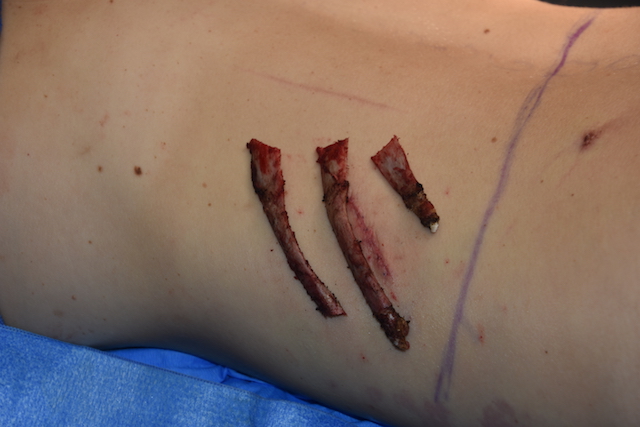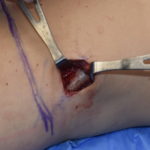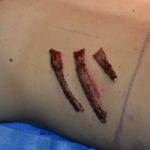Background: The concept of ribs being removed for a slimmer waist is always a controversial subject on the surface. The perception of what the surgery is and how it is done and works is almost always misunderstood. The name ‘rib removal’ is an inaccurate description of it and further leads to these misunderstandings. Unless the surgeon has actually done the surgery or a patient has been through it, it is impossible to understand the anatomic basis for its effectiveness or the medical safety of it.
Intro to Rib Removal Surgery Dr Barry EppleyThe better term for rib removal surgery is waistline reduction surgery, specifically horizontal waistline reduction surgery. This is not only the intent of the surgery but implies there is more to it than just ribs being removed…which is accurate. While the portion of the ribs that provide support to the side of the waistline are removed, overlying soft tissues such as fat and muscle are reduced to add to that effort. Together the sides of the waistline can then fall more inward at the level of the umbilicus.
Having performed this surgery many times I have seen certain types of patients who request and undergo this surgery….to which I have developed classifications of them. Type 1 patients are lean/thin women who the casual observer would assume should be the last patient who would need any form of such waistline reduction surgery. But these are very motivated patients who have already put in considerable effort to make their waistline smaller. Besides being at a low body weight and physically fit, they may have undergone liposuction or waist train to reduce their waistline further. They turn to surgery as the final solution for maximum waistline narrowing.
Case Study: This young female was an athlete with a low body fat of around 8% with a circumferential measurement of 27”. While she had never undergone liposuction she did waist train. Waistline reduction surgery, which includes rib removals, would be the only option for further improvement.
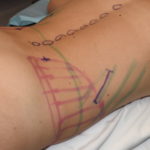
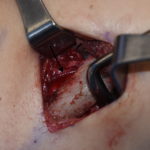
Removal of Rib #11. Dr Barry Eppley IndianapolisMOVIt is often asked how can three long ribs get removed from such a small skin incision? By getting the soft tissues off around the rib at the desired proximal osteotomy level, it is extracted by bringing the cut proximal portion up through the incision and completing the circumferential dissection vertically.

Case Highlights:
1) A better term than ‘Rib Removal Surgery’ should be Waistline Reduction Surgery since it provides a better description of what it achieves.
2) The Type 1 waistline reduction surgery patient is the most desirable since the soft tissue cover over the ribs is the thinnest.
3) The addition of flank liposuction and muscle thinning adds to what rib removal accomplishes for waistline reduction.
Dr. Barry Eppley
Indianapolis, Indiana

